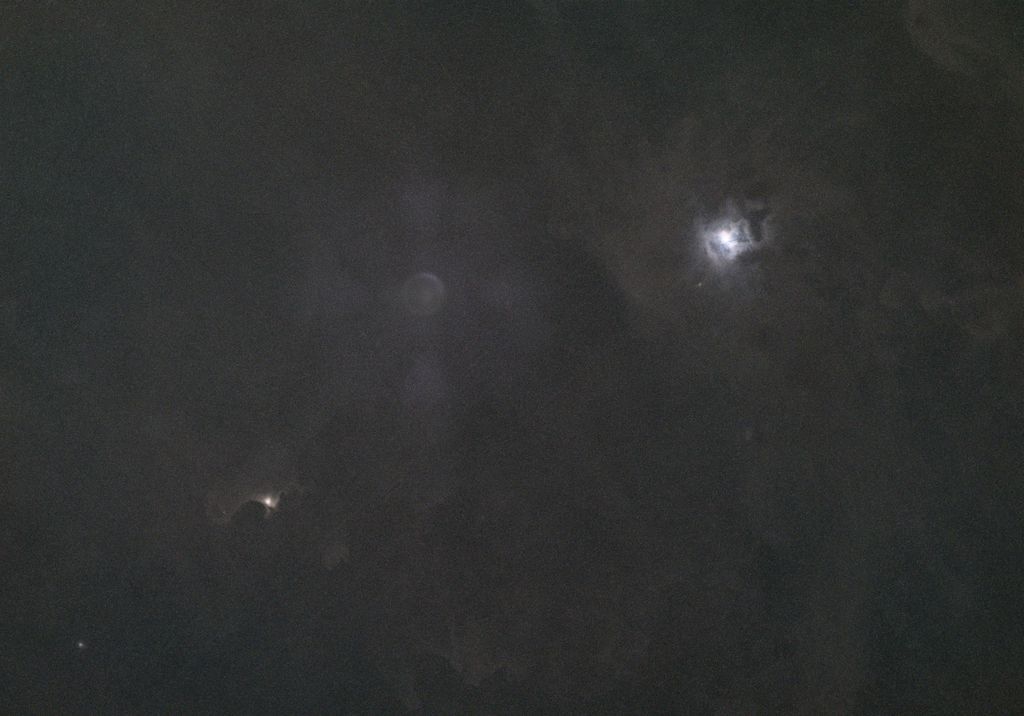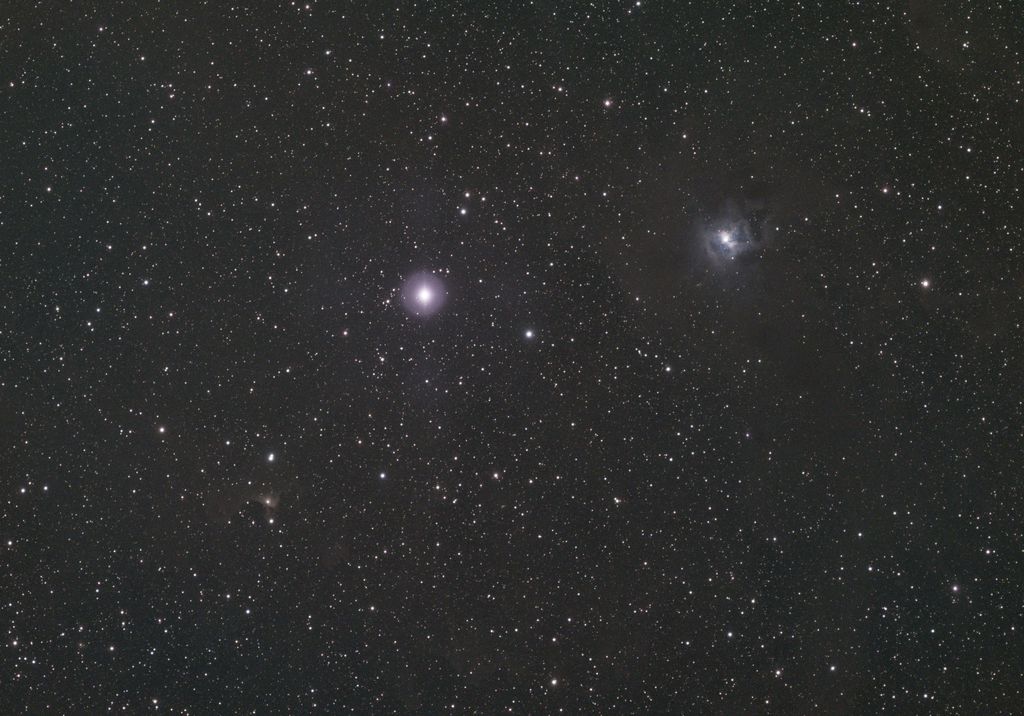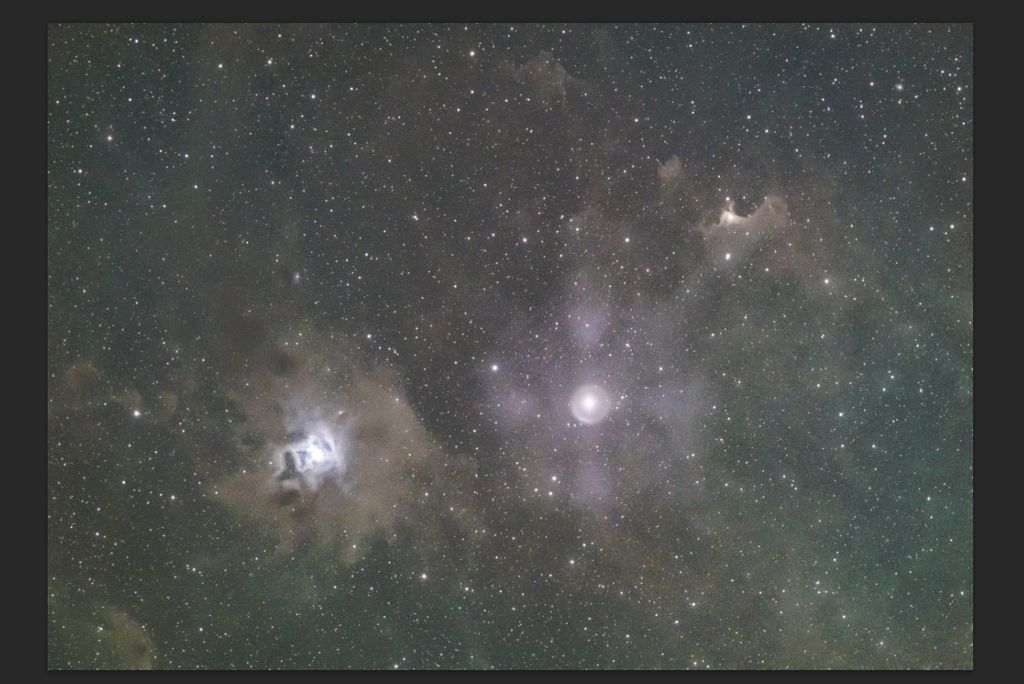Hello everybody so last night i decided to shoot the Ghost Nebula and Iris Nebula in one frame wiht my redcat 51 and Asi183MC Pro. Now, i only got a little above an hour of integration time but i wanted to ask, is this wierd + artifact that i see on the star between ghost and iris gonna go away with more integration time or am i doing something wrong while processing it? i shot this target unfiltered with a new moon. ive attached the starless version of it because with stars you dont really notice it. i guess what im asking is is there a way to get rid if that in processing or am i just doing something wrong while shooting  |
You cannot like this item. Reason: "ANONYMOUS".
You cannot remove your like from this item.
Editing a post is only allowed within 24 hours after creating it.
You cannot Like this post because the topic is closed.
Copy the URL below to share a direct link to this post.
This post cannot be edited using the classic forums editor.
To edit this post, please enable the "New forums experience" in your settings.
also if it helps here is the normal picture with stars, there is also a big halo around that star aswell...  |
You cannot like this item. Reason: "ANONYMOUS".
You cannot remove your like from this item.
Editing a post is only allowed within 24 hours after creating it.
You cannot Like this post because the topic is closed.
Copy the URL below to share a direct link to this post.
This post cannot be edited using the classic forums editor.
To edit this post, please enable the "New forums experience" in your settings.
Hi Claudio,
how many pictures did you take before stacking ? Could it be that the halo is only in one of the images ? The lines look like not completely removed trails of planes or satellites, should become clearer by looking at the individual images before stacking
Götz
|
You cannot like this item. Reason: "ANONYMOUS".
You cannot remove your like from this item.
Editing a post is only allowed within 24 hours after creating it.
You cannot Like this post because the topic is closed.
Copy the URL below to share a direct link to this post.
This post cannot be edited using the classic forums editor.
To edit this post, please enable the "New forums experience" in your settings.
yeah i know about the lines and when im gonna get some more nights in im gonna remove them, i just ran into this problem some time ago and i thought maybe i did something wrong that time so i wanted to try again. seems like the star is emitting "too much" light, and also the star is really bloated and has a ugly star halo that if possible i want to minimize that. the star halo wouldnt be such a broblem but the thing that irritates me is that + shape. ive overstretched the image, more than i would do, just so it would be visible how big it actually is..  |
You cannot like this item. Reason: "ANONYMOUS".
You cannot remove your like from this item.
Editing a post is only allowed within 24 hours after creating it.
You cannot Like this post because the topic is closed.
Copy the URL below to share a direct link to this post.
This post cannot be edited using the classic forums editor.
To edit this post, please enable the "New forums experience" in your settings.
It wont go away anymore. If you already have one hour of integration, sigma clipping wont ignore it, even if it isnt there in the next session and you use very rigorous settings.. But you could remove it  in the starless version, without doint a lot of damage. I wonder where it comes from. Dirt on the lens? some anisotropic atmospherical diffraction effect (this can sometimes happen from ice crystals)? Something else that didnt come to my mind? Edit: I first noticed only the vertical part. It is also horizontal. Maybe some diffraction effect from the sensor itself?
|
You cannot like this item. Reason: "ANONYMOUS".
You cannot remove your like from this item.
Editing a post is only allowed within 24 hours after creating it.
You cannot Like this post because the topic is closed.
Copy the URL below to share a direct link to this post.
This post cannot be edited using the classic forums editor.
To edit this post, please enable the "New forums experience" in your settings.
i know it now. its not dirt on the lens or anything you said. The 183MC Pro doesnt have a IR-cut filter infront of the sensor. i asked in the pixinsight forum about it aswell and someone pointed it out. they also linked me this for image comparison: https://www.cloudynights.com/topic/...nal-reflections-in-my-celestron-c6-sct/page-3so yeah thats settled now  |
You cannot like this item. Reason: "ANONYMOUS".
You cannot remove your like from this item.
Editing a post is only allowed within 24 hours after creating it.
You cannot Like this post because the topic is closed.
Copy the URL below to share a direct link to this post.
This post cannot be edited using the classic forums editor.
To edit this post, please enable the "New forums experience" in your settings.
The star in question is probably T Cephei, which is very bright in the IR: https://www.astrobin.com/189410/C/#c110449If you image without an IR-cut filter, this probably could be the reason why the specific star creates such a bright halo.
|
You cannot like this item. Reason: "ANONYMOUS".
You cannot remove your like from this item.
Editing a post is only allowed within 24 hours after creating it.
You cannot Like this post because the topic is closed.
Copy the URL below to share a direct link to this post.
This post cannot be edited using the classic forums editor.
To edit this post, please enable the "New forums experience" in your settings.
Yes, an IR/UV cut filter will help.
You see here IR reflections from the sensor's first surface (which gives the halo) and a reflection from the sensor structure which acts as a diffraction grating (which gives the vertical and horizontal "ghost" images of the bright star). These reflection go back to your flattener or whatever ist the first optical surface in front of the sensor and from there back to the sensor.
The optical surfaces of the lenses in the telescope are usually AR-coated mainly for the visible part of the spectrum and the AR-coatings do not work as well in the IR.
Chris
|
You cannot like this item. Reason: "ANONYMOUS".
You cannot remove your like from this item.
Editing a post is only allowed within 24 hours after creating it.
You cannot Like this post because the topic is closed.
Copy the URL below to share a direct link to this post.
This post cannot be edited using the classic forums editor.
To edit this post, please enable the "New forums experience" in your settings.
Die Launische Diva:
The star in question is probably T Cephei, which is very bright in the IR: https://www.astrobin.com/189410/C/#c110449
If you image without an IR-cut filter, this probably could be the reason why the specific star creates such a bright halo. and also, why i didnt observe this on gamma Cas with the QHY183m
|
You cannot like this item. Reason: "ANONYMOUS".
You cannot remove your like from this item.
Editing a post is only allowed within 24 hours after creating it.
You cannot Like this post because the topic is closed.
Copy the URL below to share a direct link to this post.
This post cannot be edited using the classic forums editor.
To edit this post, please enable the "New forums experience" in your settings.





